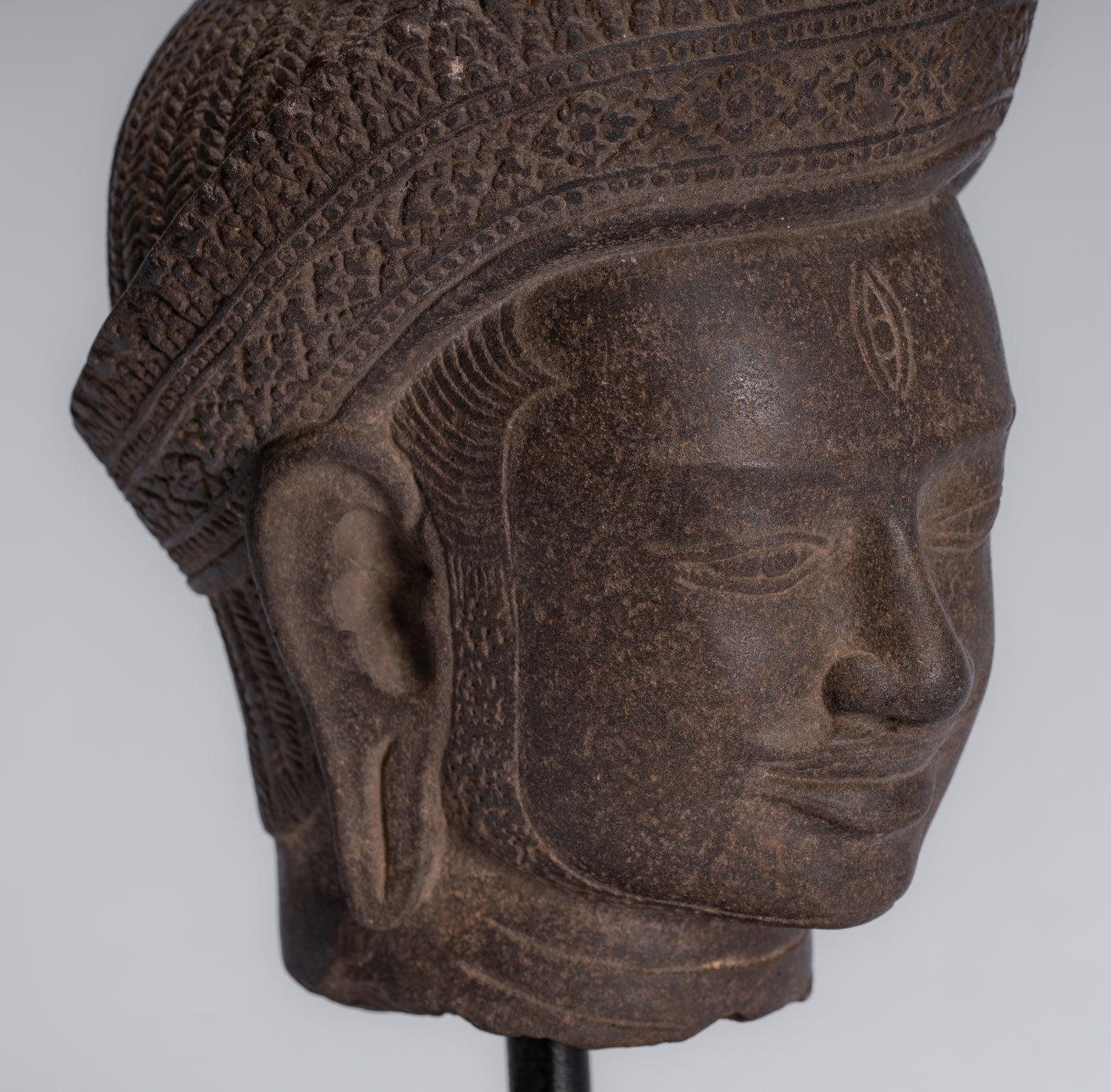
What does Vishnu mean?
By Amy Underdown, London, UK
As one of the most popular deities within Hinduism, and also one of the most powerful, Vishnu represents many different aspects of Hindu beliefs. He is known as the Preserver, tasked with overseeing the balance of the world and ensuring that evil is kept at bay.
These multiple facets of Vishnu’s intense power are reflected in the four items he holds in his multiple arms. Though it can depend on the depiction, Vishnu’s first raised arm holds a mace or club. This is said to symbolise both mental and physical strength, as well as Vishnu’s general authority. His other raised arm holds a discus, which represents the mind or chakra. In his lower arms, we find a conch, which is said to replicate the original noise of creation due to the ‘om’ sound that it produces. And lastly, Vishnu is often seen holding a lotus flower or its seed, a symbol seen in many Asian religions, which in this instance relays the message of fertility, the beauty of creation and the freedom that comes with existence.
Vishnu is also seen in many different bodily positions, again indicative of his various interpretations throughout time and across schools of thought. Interestingly, one thing that sets Vishnu apart from other Hindu deities is the fact that he is very often not alone in these depictions. Whilst we know that Vishnu is a vastly popular deity – even less surprising knowing that he promises happiness and a dispute-free life – it is not just this reason that other idols are often in his presence. One god with whom he is often depicted is his consort Lakshmi. One common visual sees Vishnu standing upright on a lotus flower, with Lakshmi close by. He is also often seen resting on the serpent god, Sheshnaag, who has one thousand heads. Sheshnaag is in turn surrounded by a vast ocean of milk, which represents the purity of man’s consciousness. This purity transcends into Vishnu’s home, which is called Vaikuntha, which is free of sadness and poverty (certainly a lovely-sounding place to reside, so long as all thousand-headed serpents are removed.)
He is also often seen riding on Garuda the eagle, who is the King of Birds, and other times is seen combined with Shiva into a single body. These latter depictions, known as the Harihara or Shankaranarayana, embody a coming together of two schools of thought which dedicate themselves towards either Vishnu or Shiva. Whilst certain groups still prioritise one deity over the other, this bringing together shows a unity through art and a recognition of the important powers of both Hindu gods. Vishnu is sometimes crafted in the colours of dark rain clouds in order to associate his being with that of water, the most crucial element of life and survival. In these instances, Shiva is often shown in white to represent the colour of ash, the symbol of destruction and transiency of life.
These many creations are symbolic of the idea that Vishnu feeds into all aspects of life. His preservation of the balance of good and evil and the power that comes with this are truly communicated through his various depictions, be it what he holds in his hands or the other beings with which he is shown.




















